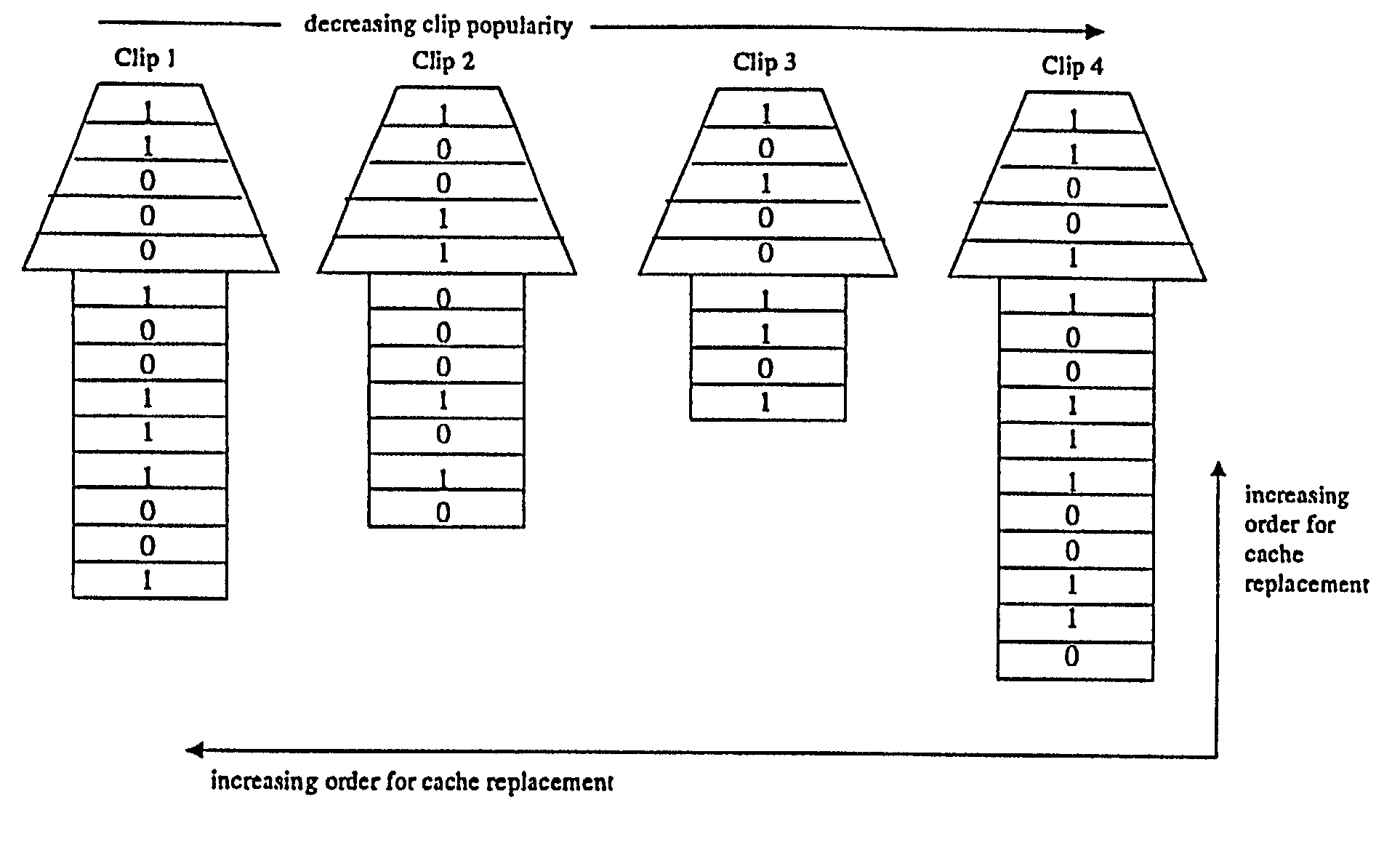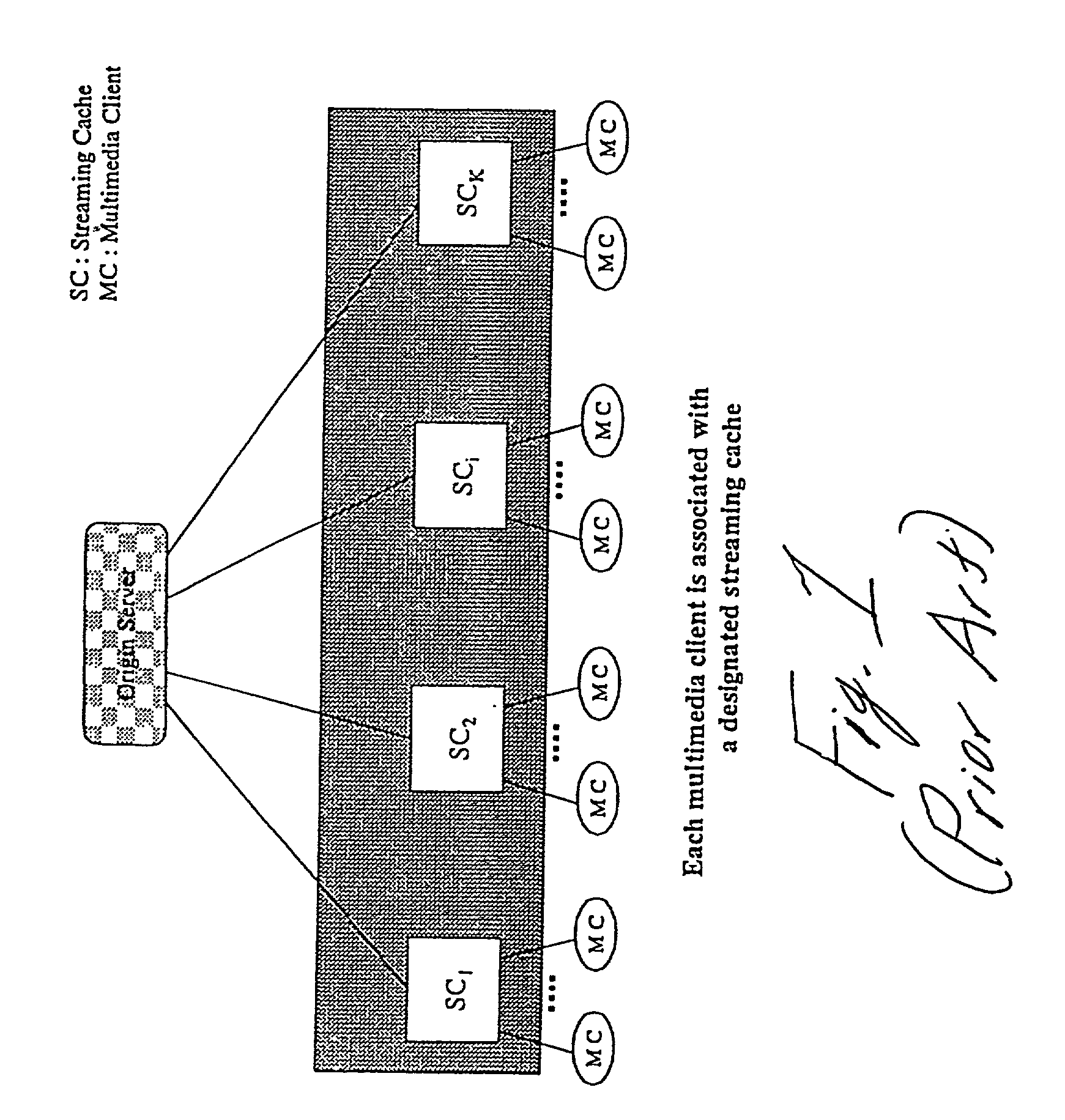Method and system for data layout and replacement in distributed streaming caches on a network
a distributed streaming and cache technology, applied in the field of network systems, can solve the problems of limited data caching systems, data congestion that is only expected to grow in the future, severe strain on the internet infrastructure, etc., and achieve the effects of reducing startup latency, reducing storage, and reducing the probability of failur
- Summary
- Abstract
- Description
- Claims
- Application Information
AI Technical Summary
Benefits of technology
Problems solved by technology
Method used
Image
Examples
Embodiment Construction
[0034]To more fully appreciate the segmentation / distribution / replacement method of the present invention, it is instructive to provide a general understanding of access patterns of streaming media over a network.
[0035]At present, there is a lack of understanding concerning access patterns of streaming media on global networks such as, for example, the world wide web. In lieu of such understanding, a Zipf distribution is often used to model these access patterns. Given a set of media clips with different popularity rankings, where the popularity ranking is modeled by a popularity rank r, Zipf's law relates the probability of access to the popularity of the object. A more popular media clip would have a lower rank number, and conversely a less popular clip will have a higher rank number. Specifically, given an object with popularity rank r, the probability p that a new request accesses this object is inversely proportional to r. That is,
p=K(1 / r) (1)
where K is a constant.
[0036]Equatio...
PUM
 Login to View More
Login to View More Abstract
Description
Claims
Application Information
 Login to View More
Login to View More - R&D
- Intellectual Property
- Life Sciences
- Materials
- Tech Scout
- Unparalleled Data Quality
- Higher Quality Content
- 60% Fewer Hallucinations
Browse by: Latest US Patents, China's latest patents, Technical Efficacy Thesaurus, Application Domain, Technology Topic, Popular Technical Reports.
© 2025 PatSnap. All rights reserved.Legal|Privacy policy|Modern Slavery Act Transparency Statement|Sitemap|About US| Contact US: help@patsnap.com



